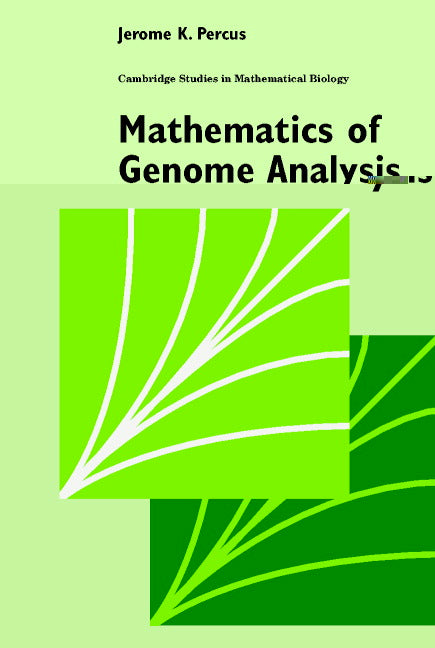Freshly Printed - allow 6 days lead
Couldn't load pickup availability
Mathematics of Genome Analysis
Presents a brief description of several ways in which mathematics and statistics are being used in genome analysis and sequencing.
Jerome K. Percus (Author)
9780521585262, Cambridge University Press
Paperback, published 3 December 2001
150 pages
22.9 x 15.3 x 1.1 cm, 0.232 kg
'The American Joint Policy Board for Mathematics has chosen the role of mathematics in analysing and understanding the data arising from the Human Genome Project as the theme for Mathematics Awareness Month 2002, [1]. Percus' state of the art snapshot of what is involved in unravelling this 'cunning'st pattern of excelling nature' (Othello, Act 5, Scene 2) could thus hardly be more timely.' The Mathematical Gazette
The massive research effort known as the Human Genome Project is an attempt to record the sequence of the three trillion nucleotides that make up the human genome and to identify individual genes within this sequence. While the basic effort is of course a biological one, the description and classification of sequences also lend themselves naturally to mathematical and statistical modeling. This short textbook on the mathematics of genome analysis presents a brief description of several ways in which mathematics and statistics are being used in genome analysis and sequencing. It will be of interest not only to students but also to professional mathematicians curious about the subject.
Preface
1. Decomposing DNA
2. Recomposing DNA
3. Sequence statistics
4. Sequence comparison
5. Spatial structure and dynamics of DNA
Bibliography
Index.
Subject Areas: Biotechnology [TCB], Molecular biology [PSD], Mathematical modelling [PBWH], Applied mathematics [PBW]


